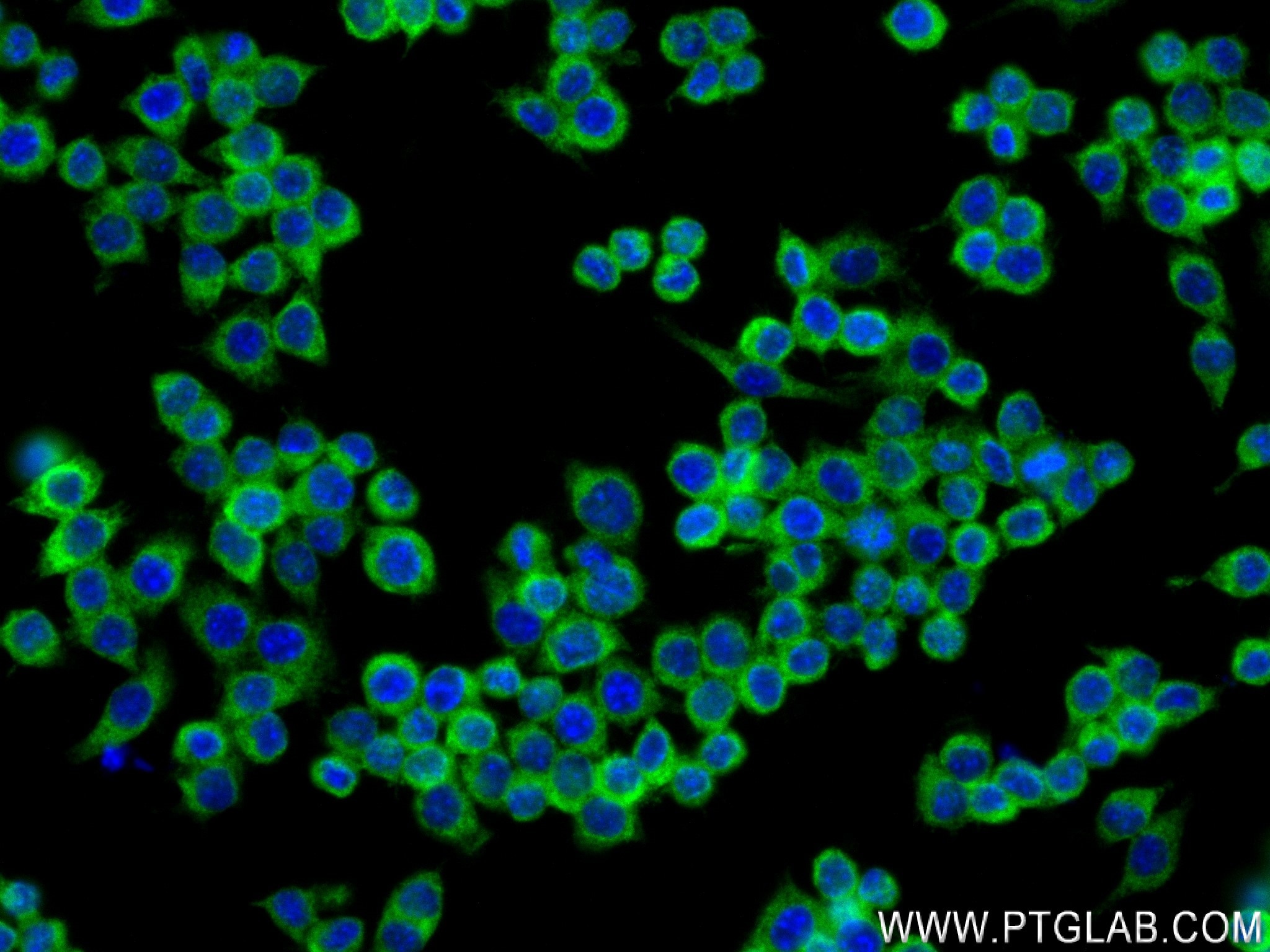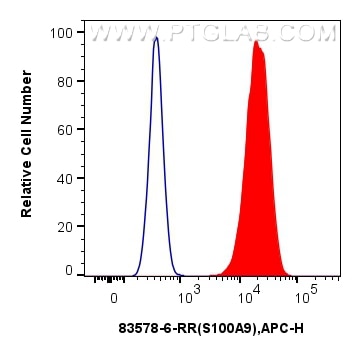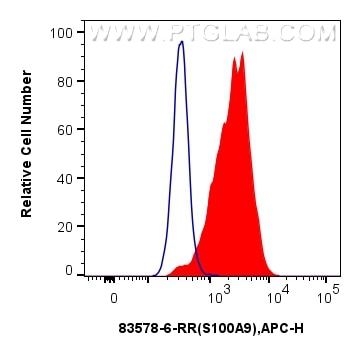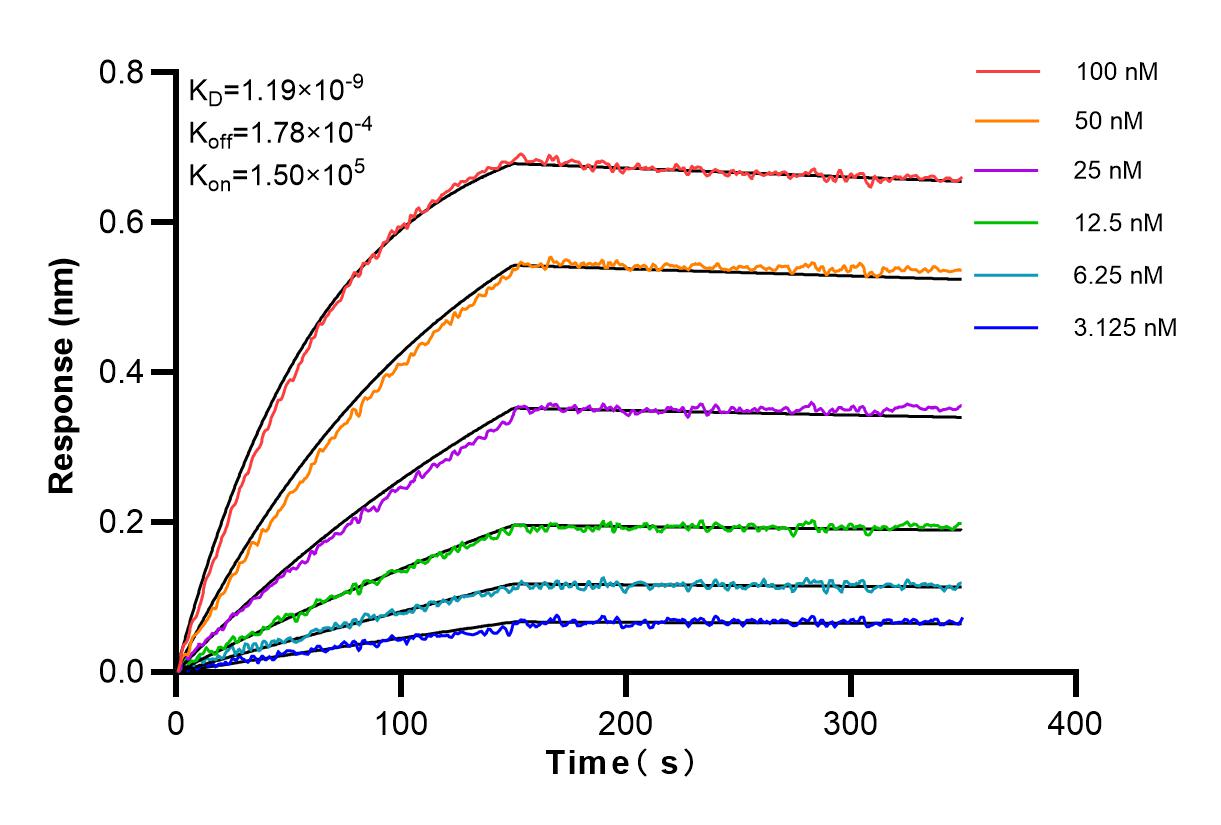Tested Applications
| Positive IF/ICC detected in | RAW 264.7 cells |
| Positive FC (Intra) detected in | A431 cells, Jurkat cells |
Recommended dilution
| Application | Dilution |
|---|---|
| Immunofluorescence (IF)/ICC | IF/ICC : 1:125-1:500 |
| Flow Cytometry (FC) (INTRA) | FC (INTRA) : 0.25 ug per 10^6 cells in a 100 µl suspension |
| It is recommended that this reagent should be titrated in each testing system to obtain optimal results. | |
| Sample-dependent, Check data in validation data gallery. | |
Product Information
83578-6-RR targets S100A9 in IF/ICC, FC (Intra), ELISA applications and shows reactivity with human samples.
| Tested Reactivity | human |
| Host / Isotype | Rabbit / IgG |
| Class | Recombinant |
| Type | Antibody |
| Immunogen | S100A9 fusion protein Ag25764 Predict reactive species |
| Full Name | S100 calcium binding protein A9 |
| Calculated Molecular Weight | 13 kDa |
| GenBank Accession Number | BC047681 |
| Gene Symbol | S100A9 |
| Gene ID (NCBI) | 6280 |
| RRID | AB_3671191 |
| Conjugate | Unconjugated |
| Form | Liquid |
| Purification Method | Protein A purification |
| UNIPROT ID | P06702 |
| Storage Buffer | PBS with 0.02% sodium azide and 50% glycerol, pH 7.3. |
| Storage Conditions | Store at -20°C. Stable for one year after shipment. Aliquoting is unnecessary for -20oC storage. 20ul sizes contain 0.1% BSA. |
Background Information
S100A9 is a calcium binding protein as a member of the S100 family of proteins. S100 proteins are low molecular weight (9 to 14 kDa) intracellular calcium-binding proteins that control key cellular pathways including regulation of the cytoskeleton, cell migration and adhesion, and host oxidative defense. S100A9 may exist as a homodimer, heterodimer (24 kDa) with an S100A8 partner (S100A8/A9), or as a heterotetramer (28 kDa) with an S100A8 partner(S100A8/A9). S100A8 and S100A9 are found intracellularly in granulocytes, monocytes, and early differentiation stages of macrophages.
Protocols
| Product Specific Protocols | |
|---|---|
| IF protocol for S100A9 antibody 83578-6-RR | Download protocol |
| FC protocol for S100A9 antibody 83578-6-RR | Download protocol |
| Standard Protocols | |
|---|---|
| Click here to view our Standard Protocols |









